Trepanning
Trephine, Neurosurgery, Trepanation
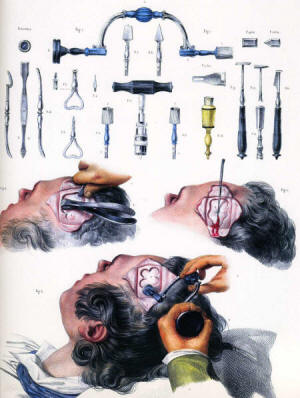 |
|
Drawings from
Bourgery & Jacob
|
Trepanning is the
medical process of drilling or cutting a hole into the skull in order to
relieve pressure on the brain tissue, lift a compression fracture of the
skull, or remove a blood clot on the brain. If a person had a concussion
with depression of the skull bone, that depressed area would need to be lifted
or removed and then the clot under the concussion removed to alleviate trauma
induced symptoms.
The process is
documented to have been performed as far back as 4000 years ago by the Inca
Indians of Peru. If you would like more information on this procedure
and the history, please do a search for the words: trephine, Inca,
neurosurgery, trepanning, trepan on Google.com.
Trepanning (pronounced:
tree-panning), as was frequently practiced in America during the 1800's, was
performed with an instrument called a trephine (pronounced: tray-feene or
tree-fine) which actually is a saw that cuts a circular hole in the scull.
The scalp over the skull
is first incised with a scalpel, a flap laid back, and the hole bored or saw
cut by a twisting motion of the trephine. In some types of trephines,
there is a center drill which holds and guides the outer cutting edge of the
saw. There are two main types of trephine saws, the earlier crown type and
the later Galt type.
Case study
citations of trepanning
performed during the Civil War from the Medical and Surgical History
of the War of Revolution

Scalpel for tissue incision
|
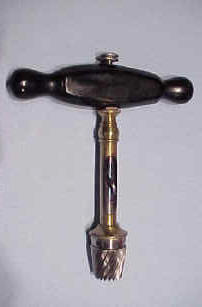
Trephine with 'Galt' style saw (assembled)
c. 1870
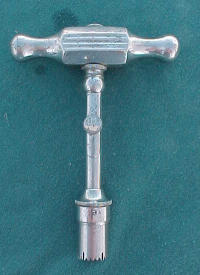
An all 'metal' trephine, post 1900
|
Another instrument used
for this procedure is the Hey saw, which has both a straight and curved tooth
edge for cutting into the skull.
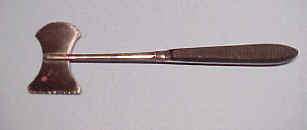
Hey saw used to cut into the skull bone
The circular piece of
bone, about the size of a nickel is then removed by using one end of a
lenticular or bone rasp to lift out the bone, then the edges of the bone would
be smoothed with the rasp.

Bone file for smoothing edges and lifting out
parts of bone.
Any bone dust could then
be removed with the bone brush before cutting into the dura, which is the
outer covering of the brain.

Bone brush to remove bone sawdust from the
cutting site.
Examples of
American cased trepanning sets
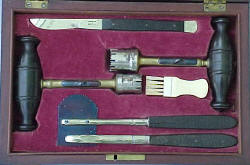
Wiegand & Snowden, c. 1830
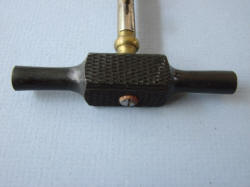
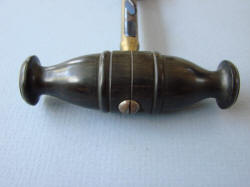
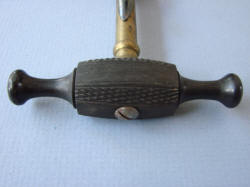
Pre-1860 removable handles, (center is turned wood),
(left is carved ebonized
wood), (right is heat molded)
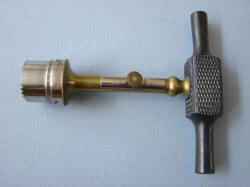
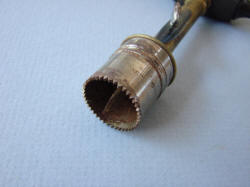
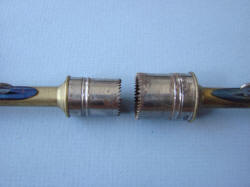

Pre-1860 Crown type cutting heads, typical of the 1830-50 era
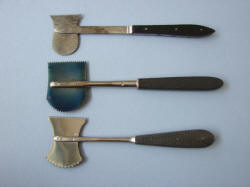
Variations on Hey saw designs
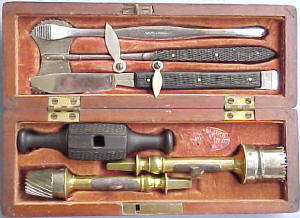

Fig. 1: Cased Trepanning s
Fig. 2: Trepanning instruments
In figure 1, is a cased trepanning
set by Wade and Ford.
The set contains a lenticular bone rasp, scalpel, Hey saw, crown type
trephine, wood handle for the trephine, and both a crown and a Galt type
trephine (disassembled).
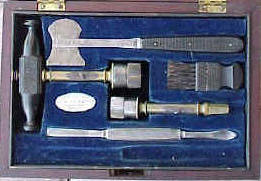
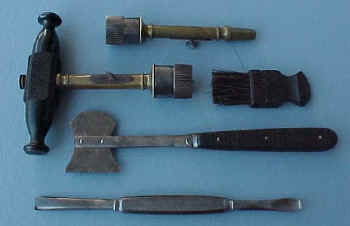
Fig. 3: Trephanning cased set
Fig. 4: instruments from case
The set in figure 3 contains a bone brush and is
missing the scalpel. Figure 4 shows the individual instruments from the
Gemrig set. The trephine is assembled with a crown type trephine saw.
These type of cased sets were issued to the
Union surgeons during the Civil War and made by makers like Gemrig, Tiemann,
and Hernstein. For additional information see
trepanning during the Civil War.
Display of multiple trepanning sets in all the multiple
Displays on
this site.
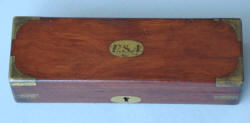
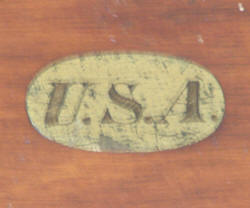
The set is engraved on the cartouche
with " U S A" and the label indicates the last year Hernstein would have
used this label, which is the first year of the War. The label also
indicates the set was produced under contract for the U. S. Army Hosp. Dept.
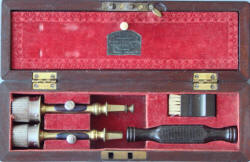
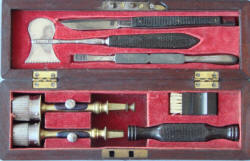
"H. Hernstein, N. Y, Surgical Instruments,
393 Broadway,
U. S. ARMY, Hosp. Dept."
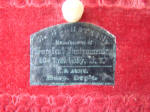
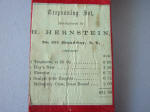
The partition with trade label and sales list is present
on the front and back of the embossed partition.
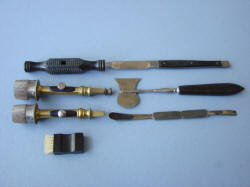
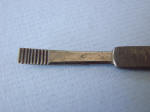
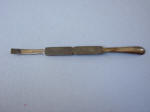
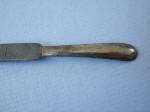
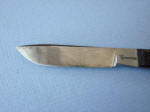
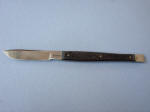
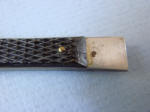
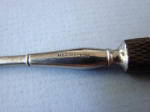
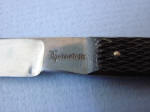
|